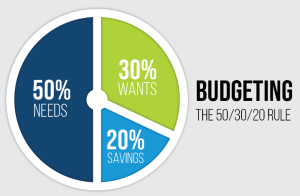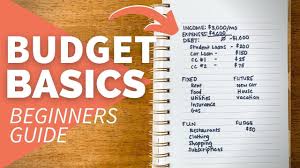Frugal living is a lifestyle focused on being resourceful, minimizing waste, and prioritizing financial well-being over excessive consumption. It involves making conscious choices to spend money wisely and find creative ways to save.
Skale Money Key Takeaways
- Frugal living is about being resourceful, minimizing waste, and prioritizing financial well-being over excessive consumption. It can lead to increased savings, reduced debt, and improved overall well-being.
- Adopting a frugal mindset involves reframing your relationship with money and material possessions, as well as setting clear financial goals to work towards.
- Implementing frugal tips in everyday life, such as saving on groceries, reducing utility costs, and exploring frugal transportation options, can lead to significant savings.
- Embracing DIY home maintenance, decorating on a budget, and finding ways to save on fashion and personal care can help you cut costs without sacrificing quality of life.
- Balancing frugality with sustainability and quality of life is key. Avoid common pitfalls like false economies and overextending your frugality to maintain a fulfilling and well-rounded lifestyle.
Table of Contents
Photo by Alicia Christin Gerald on Unsplash
1.2 Benefits of adopting a frugal lifestyle
- Increased savings and financial security
- Reduced debt and improved credit health
- Lower environmental impact and more sustainable living
- Greater appreciation for the things you have
- More freedom and flexibility in your lifestyle
- Reduced stress and improved overall well-being
2. Creating a Frugal Mindset
2.1 Shifting your perspective on spending
Adopting a frugal mindset involves reframing your relationship with money and material possessions. Instead of impulse purchases, focus on needs over wants and seek value over status.
2.2 Setting financial goals
| Goal | Timeframe |
| Pay off credit card debt | 12-18 months |
| Save 3-6 months’ worth of living expenses | 2-3 years |
| Contribute 15% of income to retirement | Ongoing |
| Save for a down payment on a home | 5 years |
3. Frugal Tips for Everyday Living
3.1 Saving on groceries and meal planning
- Make a grocery list and stick to it
- Buy in bulk for non-perishable items
- Meal prep and cook at home
- Use coupons and take advantage of sales
3.2 Reducing utility costs
- Optimize your home’s energy efficiency
- Adjust thermostat settings and use fans
- Unplug unused electronics and appliances
- Switch to energy-efficient light bulbs
3.3 Frugal transportation options
- Use public transportation or carpool
- Maintain your vehicle to improve fuel efficiency
- Consider a used or fuel-efficient car
- Bike or walk for short trips
4. Frugal Home Management
4.1 DIY home maintenance and repairs
- Learn basic home repair skills
- Use online tutorials and resources
- Rent or borrow tools instead of buying
4.2 Decorating on a budget
Photo by Sandy Millar on Unsplash
| Task | DIY Cost | Professional Cost |
| Painting a room | $50-$200 | $300-$800 |
| Installing new flooring | $500-$2,000 | $1,500-$5,000 |
| Updating kitchen cabinets | $200-$1,000 | $2,000-$10,000 |
5. Frugal Fashion and Personal Care
5.1 Building a minimalist wardrobe
- Invest in high-quality, versatile clothing
- Shop secondhand, thrift stores, and consignment shops
- Maintain and repair your clothes to extend their lifespan
5.2 Beauty and grooming on a budget
- Cut your own hair or find a budget-friendly stylist
- Make your own beauty products using natural ingredients
- Prioritize essential personal care items and avoid impulse buys
6. Entertainment and Leisure on a Budget
Photo by freestocks on Unsplash
6.1 Free and low-cost activities
- Explore local parks, museums, and community events
- Borrow books, movies, and games from the library
- Host potluck dinners and game nights with friends
6.2 Frugal travel tips
| Activity | Frugal Option | Regular Option |
| Vacation | Camping, house-sitting, or using points/miles | Hotel stay and flights |
| Dining out | Packing a picnic or cooking at your destination | Eating at restaurants |
| Entertainment | Free local events, hiking, or visiting free attractions | Paid attractions and activities |
7. Technology and Frugal Living
7.1 Saving on gadgets and electronics
- Buy refurbished or used devices
- Opt for older model smartphones and laptops
- Maintain and repair your tech to extend its lifespan
7.2 Using apps and online tools for frugal living
Here are some popular budgeting apps:
| App | Features |
| Mint | Budgeting, expense tracking, and financial planning |
| Ibotta | Cash-back rewards for grocery and retail purchases |
| Rakuten | Cash-back and coupon codes for online shopping |
| Houzz | DIY home improvement guides and cost estimates |
8. Frugal Finances
8.1 Banking and credit card strategies
- Avoid unnecessary fees by choosing the right bank accounts
- Use credit cards responsibly to earn rewards and build credit
- Negotiate better rates and terms with your service providers
8.2 Investing on a budget
- Start small with low-cost index funds and ETFs
- Automate your savings and investments to build wealth over time
- Educate yourself on personal finance and investment strategies
9. Frugal Parenting
Photo by Kelly Sikkema on Unsplash
9.1 Saving on children’s clothing and gear
- Buy secondhand or shop consignment stores
- Swap or hand down items with other families
- Prioritize quality over quantity for essential items
9.2 Affordable family activities
| Item | New Cost | Second-Hand Cost |
| Stroller | $200-$500 | $50-$150 |
| Car seat | $100-$300 | $25-$100 |
| Crib | $300-$800 | $50-$200 |
10. Sustainable Frugality
10.1 Eco-friendly frugal living tips
- Reduce, reuse, and recycle to minimize waste
- Choose energy-efficient appliances and home upgrades
- Grow your own food or shop at local farmers markets
10.2 Balancing frugality with quality of life
- Prioritize experiences over material possessions
- Invest in high-quality, long-lasting items
- Embrace minimalism and declutter regularly
11. Common Frugal Living Mistakes to Avoid
11.1 False economies
- Sacrificing quality for the lowest price
- Hoarding items you don’t need
- Neglecting necessary maintenance and repairs
11.2 Overextending frugality
| Pitfall | How to Avoid |
| Becoming too restrictive and joyless | Allow for some discretionary spending |
| Neglecting your health and well-being | Prioritize self-care and preventative measures |
| Isolating yourself socially | Maintain a balanced lifestyle with social activities |
12. Success Stories: Real-Life Frugal Living Examples
12.1 Case studies of frugal lifestyles
- Families who have paid off debt and built substantial savings
- Individuals who have retired early by living frugally
- Entrepreneurs who have started businesses on a shoestring budget
12.2 Lessons learned from frugal living experts
- Embrace a minimalist mindset and focus on what truly matters
- Prioritize financial security and long-term goals over short-term gratification
- Continuously seek ways to optimize your spending and increase your savings
Bottomline
Adopting a frugal lifestyle can be a transformative journey towards financial freedom and a more fulfilling life. By implementing the tips and strategies outlined in this guide, you can cultivate a frugal mindset, save money, and achieve your financial goals while maintaining a high quality of life.
FAQs
- What is the difference between being frugal and being cheap?
Frugality is about being resourceful and making intentional choices to spend money wisely, while being cheap often involves sacrificing quality or denying oneself basic needs to save money. - How can I start living a more frugal lifestyle?
Start by evaluating your current spending habits, setting financial goals, and implementing small changes like meal planning, DIY home projects, and finding free or low-cost entertainment options. Gradually build up your frugal living skills over time. - Is it possible to live a fulfilling life while being frugal?
Absolutely! Frugal living is not about deprivation, but rather about prioritizing your values and finding joy in the things that truly matter. By focusing on experiences, relationships, and personal growth, you can live a rich and fulfilling life without excessive spending. - How can I involve my family in frugal living?
Engage your family in the process by setting shared financial goals, involving them in meal planning and budgeting, and finding fun, low-cost activities to do together. Encourage everyone to contribute ideas and participate in the frugal lifestyle. - What are some common mistakes people make when trying to live frugally?
Some common mistakes include being too restrictive, neglecting necessary expenses, falling into the trap of “false economies,” and failing to find a balance between frugality and quality of life. It’s important to approach frugal living with a flexible and sustainable mindset.
![]()




